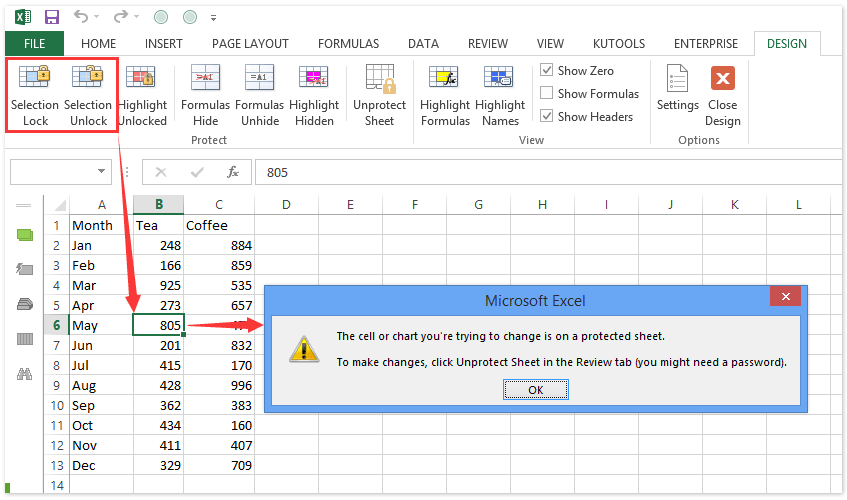5 Simple Ways to Lock Cells in Excel Sheets

Locking cells in Excel sheets is an essential skill for anyone dealing with sensitive data or complex spreadsheets. Whether you're working on a financial model, a company's payroll, or any database where data integrity is crucial, ensuring certain cells remain unchanged can prevent accidental edits or unauthorized changes. Here are five straightforward methods to lock cells in Excel, ensuring your spreadsheets maintain the highest level of integrity:
Method 1: Basic Cell Protection

To start protecting your cells in Excel, you can use the basic protection feature:
- Select the cells you want to lock.
- Right-click and choose ‘Format Cells’, then go to the ‘Protection’ tab.
- Check the ‘Locked’ box, which by default is already checked for all cells in a new sheet.
- Go to the ‘Review’ tab on the Ribbon, and click ‘Protect Sheet’.
- Set a password if desired and choose what users can do with the protected cells.
🔐 Note: Even if you lock cells, they are not protected until you protect the sheet itself.
Method 2: Custom Cell Locking

For situations where you need to protect only specific ranges of cells:
- Unlock all cells first by selecting all cells (Ctrl+A), then unchecking the ‘Locked’ option.
- Select the specific cells or ranges you want to lock.
- Go to ‘Format Cells’ and check ‘Locked’ for these cells.
- Protect the sheet using the steps mentioned above.
Method 3: Cell Locking with a Formula

This method is particularly useful if you want to lock cells based on certain conditions:
- Select the cells where you want conditional locking.
- In the formula bar, enter a formula like =IF(A1<10,TRUE,FALSE) to lock cells based on another cell's value.
- Select cells you don’t want to lock and check ‘Unlocked’ in ‘Format Cells’.
- Protect the sheet to apply the formula-based locking.
⚙️ Note: This method requires VBA or manual updates when criteria change, which might not be suitable for all users.
Method 4: Using VBA for Dynamic Locking

For more complex scenarios, VBA scripts can automate and control cell locking:
- Press Alt + F11 to open the VBA editor.
- Insert a new module and type your VBA script to lock cells:
Sub LockSpecificCells()
With Worksheets(“Sheet1”).Range(“A1:B10”)
.Locked = True
.FormulaHidden = False
End With
ActiveSheet.Protect DrawingObjects:=True, Contents:=True, Scenarios:=True
End Sub
- Close the VBA editor and run the macro to lock your cells.
Method 5: Protecting Cell Values While Keeping Cells Editable

This method allows users to edit the formula while keeping the data intact:
- Select the cells you want to edit.
- Enter a formula in these cells, like =IF(AND(A1=“Sales”,B1=10000),A1,“Restricted”).
- Unlock these cells for editing.
- Lock the cells that contain the data to be protected.
- Protect the sheet to maintain data integrity.
📚 Note: While the value can't be changed, the formula displaying it can, allowing for some flexibility in restricted editing.
In a nutshell, Excel provides various methods to lock cells, each suited to different levels of control and user interaction. Whether you're locking cells for data integrity, customizing permissions for different users, or automating the process with VBA, these techniques will ensure your spreadsheets remain both secure and functional. By understanding these methods, you can craft spreadsheets that not only protect your data but also enhance user experience by guiding them through the allowed interactions with your data.
Why should I lock cells in Excel?

+
Locking cells in Excel helps to prevent accidental or unauthorized changes to important data, formulas, or inputs. It’s crucial for maintaining data integrity and ensuring that the structure or formulas within a spreadsheet are not altered without permission.
Can I lock specific cells while leaving others unlocked?

+
Yes, you can selectively lock cells by unlocking all cells first and then specifically locking the ones you want to protect. After that, you need to protect the entire sheet to activate the locking.
What happens if I forget the password for a protected sheet?

+
If you forget the password for a protected sheet, you won’t be able to unprotect the sheet unless you have access to the original VBA script or use third-party tools, which may not be foolproof. Therefore, it’s essential to keep track of passwords used for sheet protection.



